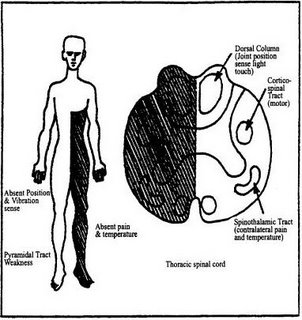Brown Sequard Syndrome

I am now working in neurology unit. Hence, I will be showing you all more neurology cases. Recently, I came across a case of SLE who presented to us with subacute onset of right LL weakness. Clinically, she has monoparesis of right leg with reduced tone, the reflexes are reduced and extensor plantar response. There is loss of joint position and vibration senses on the right side. There is loss of pain senses on the left side up to the level of T7.
These features suggest a diagnosis of right hemisection of the spinal cord. An urgent MRI of spine is warranted to exclude space occupying lesion like abscess or tumour.
Our working diagnosis is tranverse myelitis related to SLE.
The diffential diagnosis would include tumor (primary or metastatic), disk herniation, herniation of the spinal cord through a dural defect, epidural hematoma and vertebral artery dissection.
More about Charles-Édouard Brown-Séquard .
Labels: Neurology








5 Comments:
We would like to know the results of her investigations, especially, her MRI..
Her MRI show hyperintensity areas over T1-T9 in T2W setting.
Althoguh the MRI findings are too short listed and without a pic, they dont correlated with the clinical findings of BSS...
correlate*
hyperintense lesions in T2 sequences may be dueto multiple sclerosis
Post a Comment
<< Home